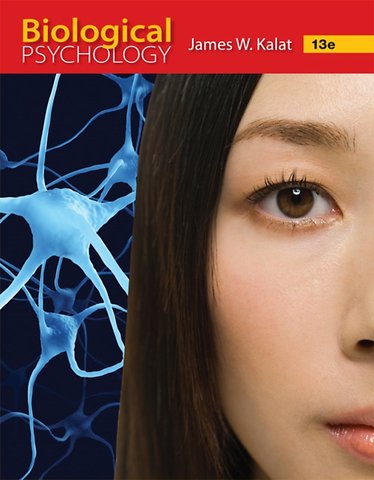



James W. Kalat is Professor Emeritus of Psychology at North Carolina State University, where he taught courses in introduction to psychology and biological psychology from 1977 through 2012.
Meer over James KalatBiological Psychology
Samenvatting
The most widely used text in its course area, James W. Kalat's 'Biological Psychology' has appealed to thousands of students before you. Why? Kalat's main goal is to make Biological Psychology understandable to Psychology students, not just to Biology majors and pre meds--and he delivers. Another goal is to convey the excitement of the search for biological explanations of behavior. Kalat believes that Biological Psychology is "the most interesting topic in the world," and this text convinces many students--and maybe you, too-with clear writing, amusing anecdotes and intriguing examples. MindTap, an interactive online learning resource that integrates the text with videos, animations and a virtual bio-lab component, makes learning even easier and more enjoyable. New to this Edition - This edition is updated with more than 550 new references to research from 2014–2017. It also includes many new or revised figures. - Major topic additions are a new section about anorexia nervosa (Ch. 9), a new module on intelligence and a new section about navigation and place cells (Ch. 12) and a new section about decision making (Ch. 13). - Briefer but important additions include new reasons to be skeptical of explaining adolescent risky behavior in terms of an immature prefrontal cortex (Ch. 4) and new reasons to be skeptical of the central role of dopamine for addictive behaviors (Ch. 14). Features - Kalat incorporates the latest research in Biological Psychology, including significant coverage on Neuroscience and Neuropsychology. - Colorful, vivid illustrations in a consistent style throughout the text connect physiological components to concise Biological Psychology explanations, helping students understand challenging concepts. - Try It Yourself exercises illustrate phenomena discussed in the text, such as the blind spot, motion blindness, habit learning, hemispheric interactions and binocular rivalry. By enabling students to experience certain research findings directly, these enjoyable, instructive exercises make it easier to comprehend and remember concepts. - Stop and Check self-quizzes at the end of every major section give students the opportunity to review and digest the material they have just read. Answers--presented upside down--immediately follow each question or set of questions. - Each module concludes with a list of key terms with page references, one or more questions to provoke thought and discussion and a set of multiple-choice questions to test important points in the module. Most of the multiple-choice questions are new to this edition.
Specificaties
Inhoudsopgave
1. Nerve Cells and Nerve Impulses.
2. Synapses.
3. Anatomy and Research Methods.
4. Genetics, Evolution, Development, and Plasticity.
5. Vision.
6. Other Sensory Systems.
7. Movement.
8. Wakefulness and Sleep.
9. Internal Regulation.
10. Reproductive Behaviors.
11. Emotional Behaviors.
12. Learning, Memory, and Intelligence.
13. Cognitive Functions.
14. Psychological Disorders.
Appendix A: Brief, Basic Chemistry.
Appendix B: Society for Neuroscience Policies on the Use of Animals and Human Subjects in Research.
Vergelijkbare boeken
Anderen die dit boek kochten, kochten ook
Net verschenen
Rubrieken
- aanbestedingsrecht
- aansprakelijkheids- en verzekeringsrecht
- accountancy
- algemeen juridisch
- arbeidsrecht
- bank- en effectenrecht
- bestuursrecht
- bouwrecht
- burgerlijk recht en procesrecht
- europees-internationaal recht
- fiscaal recht
- gezondheidsrecht
- insolventierecht
- intellectuele eigendom en ict-recht
- management
- mens en maatschappij
- milieu- en omgevingsrecht
- notarieel recht
- ondernemingsrecht
- pensioenrecht
- personen- en familierecht
- sociale zekerheidsrecht
- staatsrecht
- strafrecht en criminologie
- vastgoed- en huurrecht
- vreemdelingenrecht











